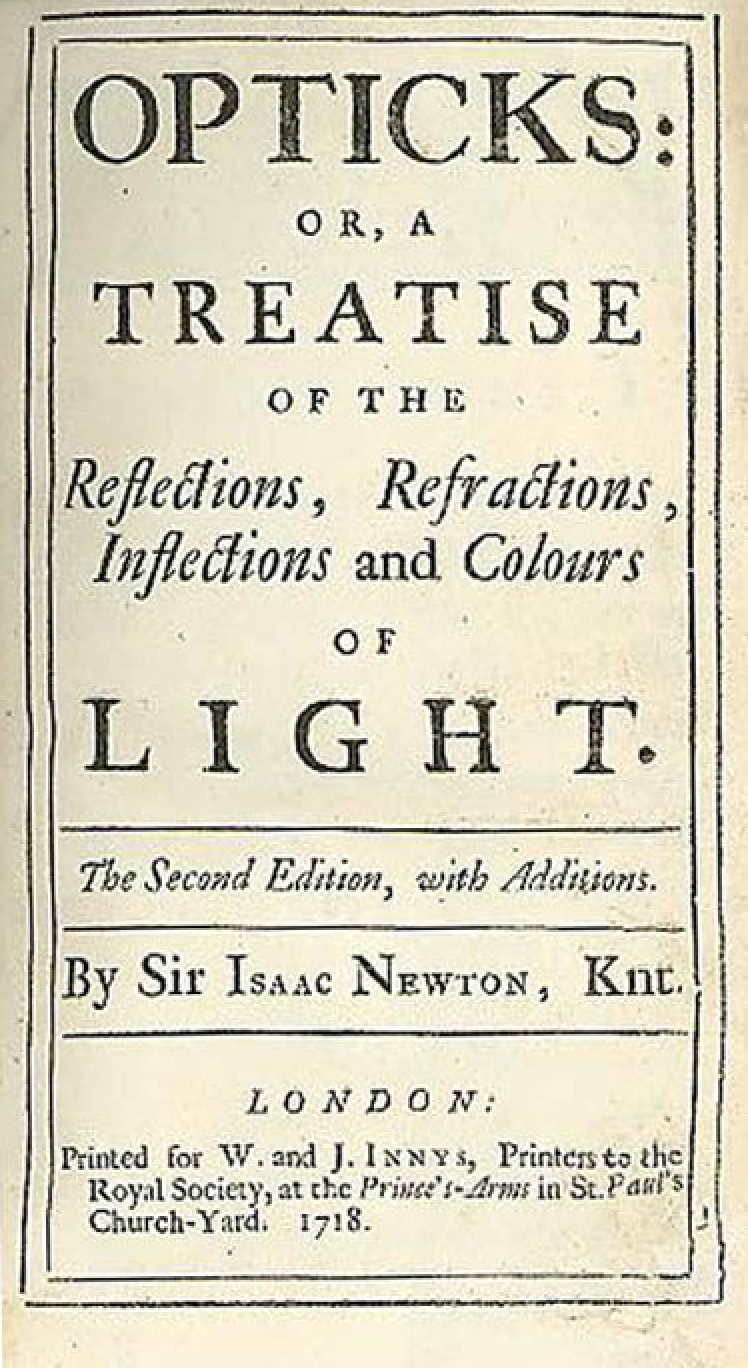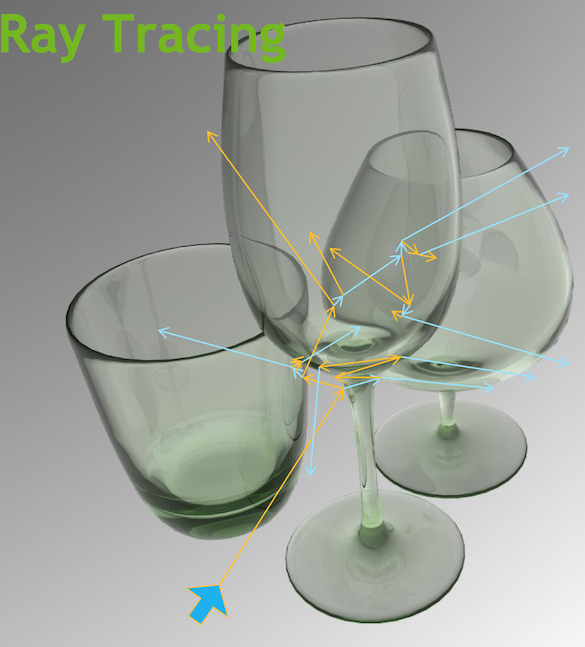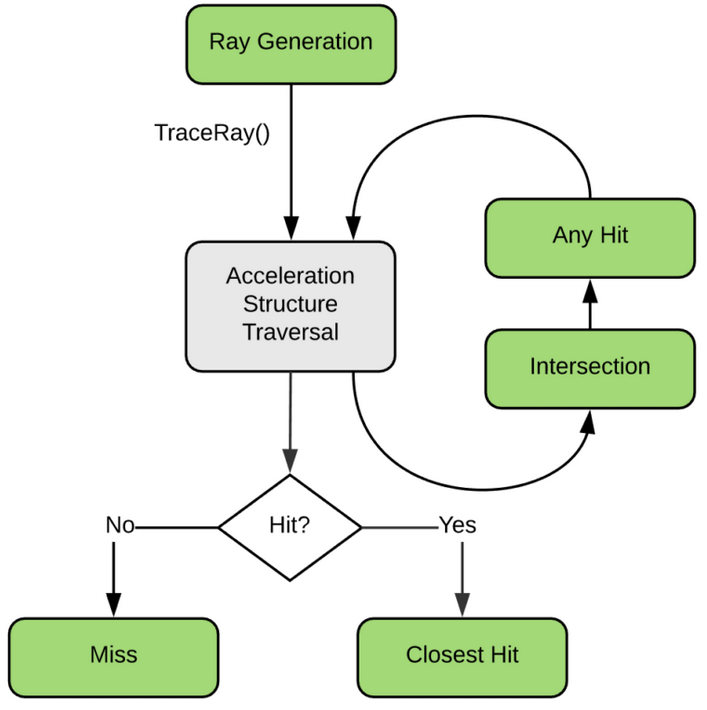JUNO + Opticks : GPU ray trace accelerated optical photon simulation
JUNO + Opticks :
GPU ray trace accelerated optical photon simulation
Open source, https://bitbucket.org/simoncblyth/opticks
Simon C Blyth, IHEP, CAS — GPU accelerated HEP applications Symposium, IHEP — 3 March 2025
Outline

- Optical Photon Simulation : Context and Problem
- p2: (JUNO) Optical Photon Simulation Problem...
- p3: Optical photons limit many simulations => lots of interest in Opticks
- p4: Optical Photon Simulation ≈ Ray Traced Image Rendering
- p5: NVIDIA RTX Generations 1=>4: RT performance : ~2x every ~2 years
- p6: NVIDIA OptiX : Ray Tracing Engine
- Opticks : Solution to Optical Photon Simulation Problem
- p7: Geant4 + Opticks + NVIDIA OptiX : Hybrid Workflow
- p8: Geometry Model Translation : Geant4 => CSGFoundry => NVIDIA OptiX
- p9: Full JUNO, Opticks, OptiX 7.5/8.0
- p10: NEW : Integrated Analytic + Triangulated Geometry
- p11: 2024 : JUNO+Opticks Geom Fixes
- p12-13: NEW : Interactive ray traced visualization via OpenGL/OptiX interop
- p14: GuideTube : Torus Triangulated
- p15: NEW : Optimized Random Number Generation (RNG) : no states limit
- p16: NEW : Out-of-core optical photon simulation : no VRAM limit
- p17: Opticks Unlimited : Simulating One Billion Photons in under 100 sec
- p18-19: Pure Optical TorchGenstep scan : 1M to 100M photons
- p20: Optical simulation 4x faster 1st->3rd gen RTX
- p21-22: How much parallelized speedup actually useful to overall speedup?
- p23: Summary + Links
- p24: Acknowledgements, p25-28: Highlighted Opticks Users, p29: GPU compute/RT frameworks
(JUNO) Optical Photon Simulation Problem...
Huge CPU Memory+Time Expense
- JUNO Muon Simulation Bottleneck
- ~99% CPU time, memory constraints
- Ray-Geometry intersection Dominates
- simulation is not alone in this problem...
- Optical photons : naturally parallel, simple :
- produced by Cherenkov+Scintillation
- yield only Photomultiplier hits
Optical photons limit many simulations => lots of interest in Opticks
| EXPT | Reactor neutrino |
| Daya Bay | neutrino oscillations |
| JUNO | mass heirarchy + oscillations => NVIDIA CN Contacts |
| Long baseline neutrino beam | |
| DUNE | FermiLab->Sanford, LAr TPC, => Assistance from Fermilab Geant4 Group |
| Neutrinoless double beta decay, dark matter, other search | |
| LZ | LUX-ZEPLIN dark matter experiment, Sandford => NVIDIA US Contacts |
| LEGEND | Large Enriched Germanium Experiment, Gran Sasso/SNOLAB |
| SABRE | dark matter direct-detection, Australia |
| AMoRE | Mo-based Rare process Experiment, S.Korea |
| nEXO | next Enriched Xenon Observatory, LLNL |
| NEXT-CRAB0 | High Pressure Gaseous Xenon TPC with a Direct VUV Camera Based Readout |
| Neutrino telescope | |
| KM3Net | Cubic Kilometre Neutrino Telescope, Mediterranean |
| IceCube | IceCube Neutrino Observatory, South Pole |
| Air shower : gamma-ray and cosmic-ray observatory | |
| LHAASO | Large High Altitude Air Shower Observatory, Sichuan |
| Accelerator | |
| LHCb-RICH | LHCb ring imaging Cherenkov sub-detector, CERN => NVIDIA EU Contacts |
Optical Photon Simulation ≈ Ray Traced Image Rendering
Not a Photo, a Calculation

- simulation
- photon parameters at sensors (PMTs)
- rendering
- pixel values at image plane
Much in common : geometry, light sources, optical physics
- both limited by ray geometry intersection, aka ray tracing
Many Applications of ray tracing :
- advertising, design, architecture, films, games,...
- -> huge efforts to improve hw+sw over 30 yrs
NVIDIA RTX Generations 1=>4
- RT Core : ray trace dedicated GPU hardware
- Each gen : doubled ray tracing speed:
- Blackwell (2025) ~2x ray trace over Ada
- Ada (2022) ~2x ray trace over Ampere
- Ampere (2020) ~2x ray trace over Turing (2018)
- NVIDIA Blackwell 4th Gen RTX : released 2025/01
- ray trace performance : ~2x every ~2 years
- Opticks optical speed directly scales with RT speed
NVIDIA® OptiX™ Ray Tracing Engine -- Accessible GPU Ray Tracing
Flexible Ray Tracing Pipeline
Green: User Programs, Grey: Fixed function/HW

Analogous to OpenGL rasterization pipeline
OptiX makes GPU ray tracing accessible
- Programmable GPU-accelerated Ray-Tracing Pipeline
- Single-ray shader programming model using CUDA
- ray tracing acceleration using RT Cores (RTX GPUs)
- "...free to use within any application..."
OptiX features
- acceleration structure creation + traversal (eg BVH)
- instanced sharing of geometry + acceleration structures
- compiler optimized for GPU ray tracing
User provides (Green):
- ray generation
- geometry bounding boxes
- intersect functions
- instance transforms
Latest Release : NVIDIA® OptiX™ 8.0.0 (Aug 2023) NEW:
- Shader Execution Reordering (SER) (Ada: up to 2x)
- SER: reduced execution+data divergence (on-the-fly)
Geant4 + Opticks + NVIDIA OptiX : Hybrid Workflow
| https://bitbucket.org/simoncblyth/opticks |
Opticks API : split according to dependency -- Optical photons are GPU "resident", only hits need to be copied to CPU memory
Geometry Model Translation : Geant4 => CSGFoundry => NVIDIA OptiX 7/8
CSGFoundry Model
- array-based -> simple serialization + upload
- entire geometry in 4 GPU allocations
- factorized using subtree digests
Geant4 Geometry Model (JUNO: 400k PV, deep hierarchy)
| PV | G4VPhysicalVolume | placed, refs LV |
| LV | G4LogicalVolume | unplaced, refs SO |
| SO | G4VSolid,G4BooleanSolid | binary tree of SO "nodes" |
Opticks CSGFoundry Geometry Model (index references)
| struct | Notes | Geant4 Equivalent |
|---|---|---|
| CSGFoundry | vectors of the below, easily serialized + uploaded + used on GPU | None |
| qat4 | 4x4 transform refs CSGSolid using "spare" 4th column (becomes IAS) | Transforms ref from PV |
| CSGSolid | refs sequence of CSGPrim | Grouped Vols + Remainder |
| CSGPrim | bbox, refs sequence of CSGNode, root of CSG Tree of nodes | root G4VSolid |
| CSGNode | CSG node parameters (JUNO: ~23k CSGNode) | node G4VSolid |
NVIDIA OptiX 7/8 Geometry Acceleration Structures (JUNO: 1 IAS + 10 GAS, 2-level hierarchy)
| IAS | Instance Acceleration Structures | JUNO: 1 IAS created from vector of ~50k qat4 (JUNO) |
| GAS | Geometry Acceleration Structures | JUNO: 10 GAS created from 10 CSGSolid (which refs CSGPrim,CSGNode ) |
JUNO : Geant4 ~400k volumes "factorized" into 1 OptiX IAS referencing ~10 GAS
Ada_cxr_overview_emm_t0_elv_t_moi__ALL.jpg
Full JUNO, Opticks, OptiX 7.5/8.0
- mostly analytic CSG
- few complex solids (eg tori) : triangulated
| raytrace 3.7M pixels | |
|---|---|
| 0.0118s (85 fps) | |
| 0.0031s (323 fps) | |
- 1st -> 3rd gen RTX : ~4x
Analytic + triangulated geometry
- default : analytic CSG solids
- user can name solids for triangulation
- avoids issue with toruses + complex solids
- triangulation from G4Polyhedron
- uses OptiX "built-in" triangle intersection
- NEW FEATURE
- Integration of analytic + triangulated geometry
Cutaway ray traced render of JUNO CD
Mostly Analytic CSG
Guide Tube Torus Triangulated
2024 : JUNO+Opticks Geom Fixes
WaterPool HBeam Overlaps FIXED with simpler approach
FastenerAcrylic translated to "list-node"
Testing triangulated GuideTube + XJ + SJ solids
- Re-implemented WaterPool with hierarchy approach
- avoid : ~120 overlaps, complex CSG
- enables translation to Opticks/GPU
- FastenerAcrylic (590) working using "list-node"
- discontiguous => simple + fast
- GuideTube (39*2*2 = 156 G4Torus)
- torus intersect v.expensive on GPU => triangulate
- adjust precision with NumberOfRotationSteps
- XJ + SJ solids (less numerous)
- many concident surfaces, testing triangulated
cxr_min__eye_1,0,0__zoom_1__tmin_0.5__sSurftube_0V1_0:0:-1.jpg
Interactive ray traced visualization via OpenGL/OptiX interop
initial viewpoint, geometry exclusions via envvars
WASDQE+mouse 3D navigation
Ada_cxr_min__eye_1,0,0__zoom_1__tmin_0.5__sSurftube_0V1_0:0:-100000.jpg
Render on NVIDIA RTX 5000 Ada Generation in 0.0060 s (not 0.0200 s)
GuideTube : Torus Triangulated
- GuideTube (39*2*2 = 156 G4Torus)
- split in phi segments, radius breaks
Intersect with torus expensive on GPU
- requires double precision to solve quartic
- even with double precision analytic solution imprecise
- numerical approach favored => triangulation
Triangulation using G4Polyhedron
G4Poly..::SetNumberOfRotationSteps
| NumberOfRotationSteps | |
|---|---|
| HepPolyhedron Default | 24 |
| Top Right | 48 |
| Bottom Right | 480 |
Adjustable: precision of intersect, number of triangles
GPUs evolved for triangles => fast even with many
RTX : Uses "builtin" RT Core triangle intersect
NEW : Optimized Random Number Generation (RNG) : no states limit
curand XORWOW workaround
XORWOW is default curand generator
- has very expensive state initialization
Opticks longstanding workaround:
- init fixed number of states at installation
- persist states to file
- load+upload states before random generation
- use XORWOW without init
- => low resource
- => more parallel threads
Workaround works, BUT:
- number of photons limited by persisted states
- large state files: 420MB for 10M curandStateXORWOW
- large global memory use for states
Philox4_32_10 is alternative curand generator
- counter based random number generator
- simple state : integer counters
- cheap to initialize Philox state
- avoid need for the workaround ->
- simply init within simulation kernel
Advantages:
- simpler, less code
- no state files
- no photon limit from states
- no global memory for the states
- faster initialization
- default OPTICKS_MAX_PHOTON now 1 billion
Stat. quality of Philox randoms comparable to XORWOW[1]
[1] cuRAND generator tests https://docs.nvidia.com/cuda/curand/testing.html
Out-of-core optical photon simulation : no VRAM limit
Opticks Unlimited
Philox counter based RNG + Out-of-core:
- no curandState limit
- no VRAM limit
=> simulate billion-photon evt, no special setup
- other than switch off debug arrays!
- Out-of-core
- simulate more photons than fit VRAM
Use sliced genstep array in: QSim::simulate
- configure max slots, default based on VRAM
- collect scintillation + cerenkov gensteps from Geant4
- form vector of int4 slices sslice.h with:
- photons in each slice less than max slots
- loop over slices:
- upload slice of genstep array
- kernel launch simulate
- gather results into NPFold
- concatenate results (NPFold::concat)
- curand "slot" offset by ph_offset
- => perfect match with any slicing
Opticks Unlimited : Simulating One Billion Photons in under 100 sec
- cxs_min.sh
- pure optical simulation of 40 torch gensteps from CD center totalling 1 billion photons on Dell Precision Workstation with NVIDIA RTX 5000 Ada (3rd Gen) [sreport shows microsecond timestamp deltas]
[NP::MakeMetaKVS_ranges2_table num_specs 8
SEvt__Init_RUN_META ==> CSGFoundry__Load_HEAD 655 ## init
CSGFoundry__Load_HEAD ==> CSGFoundry__Load_TAIL 4,235,189 ## load_geom
CSGOptiX__Create_HEAD ==> CSGOptiX__Create_TAIL 266,810 ## upload_geom
A000_QSim__simulate_HEAD ==> A000_QSim__simulate_LBEG 251 ## slice_genstep
A000_QSim__simulate_PREL ==> A000_QSim__simulate_POST 23,137,923 ## simulate slice
A000_QSim__simulate_POST ==> A000_QSim__simulate_DOWN 3,975,867 ## download slice
A000_QSim__simulate_PREL ==> A000_QSim__simulate_POST 23,449,227 REP 46,587,150 ## simulate slice
A000_QSim__simulate_POST ==> A000_QSim__simulate_DOWN 3,924,104 REP 7,899,971 ## download slice
A000_QSim__simulate_PREL ==> A000_QSim__simulate_POST 23,736,442 REP 70,323,592 ## simulate slice
A000_QSim__simulate_POST ==> A000_QSim__simulate_DOWN 4,108,315 REP 12,008,286 ## download slice
A000_QSim__simulate_PREL ==> A000_QSim__simulate_POST 23,850,920 REP 94,174,512 ## simulate slice
A000_QSim__simulate_POST ==> A000_QSim__simulate_DOWN 4,119,275 REP 16,127,561 ## download slice
A000_QSim__simulate_LEND ==> A000_QSim__simulate_PCAT 15,900,158 ## concat slices
A000_QSim__simulate_BRES ==> A000_QSim__simulate_TAIL 117,551,399 ## save arrays
TOTAL: 248,256,535
]NP::MakeMetaKVS_ranges2_table num_keys:69
Auto Config based on VRAM
- OPTICKS_MAX_SLOT=0 (default)
- Determine max slots 263M for VRAM 32G [1]
[1] SEventConfig::HeuristicMaxSlot_Rounded
| Out-of-core optical simulation | |
|---|---|
| four kernel executions, total time | 94 s |
| four hit slice downloads, total time | 16 s |
| saving 216M hits (13GB .npy file) | 117 s |
| loading geometry from /cvmfs | 4 s |
| total time | 248 s |
Pure Optical TorchGenstep scan : 1M to 100M photons
TEST=medium_scan ~/opticks/cxs_min.sh
Generate optical only events with 1M->100M photons starting from CD center, gather and save only Hits.
OPTICKS_RUNNING_MODE=SRM_TORCH ## "Torch" running enables num_photon scan OPTICKS_NUM_PHOTON=M1,10,20,30,40,50,60,70,80,90,100 OPTICKS_NUM_EVENT=11 OPTICKS_EVENT_MODE=Hit
- uses CSGOptiXSMTest executable (no Geant4 dependency, avoids ~150s of initialization time)
- load and upload geometry in ~2s
Compare simulation scans on two Dell Precision Workstations:
| GPU (VRAM) | Arch | GPU Release | CUDA(RT) Cores | RTX Gen | Driver | CUDA | OptiX |
|---|---|---|---|---|---|---|---|
| NVIDIA TITAN RTX(24G) | Turing | Dec 2018 | 4,608(72) | 1st | 515.43 | 11.7 | 7.5 |
| NVIDIA RTX 5000(32G) | Ada | Aug 2023 | 12,800(100) | 3rd | 550.76 | 12.4 | 8.0 |
- max launch size : 24/32/48G VRAM ~200/266/400M photons
ALL1_scatter_10M_photon_22pc_hit_alt.png
- 4.5M hits from 20M photon TorchGenstep, 4.4(1.1) seconds
- with: NVIDIA TITAN RTX(NVIDIA RTX 5000 Ada) 1st(3rd) gen RTX
AB_Substamp_ALL_Etime_vs_Photon_rtx_gen1_gen3.png
| PH(M) | G1 | G3 | G1/G3 |
|---|---|---|---|
| 1 | 0.47 | 0.14 | 3.28 |
| 10 | 0.44 | 0.13 | 3.48 |
| 20 | 4.39 | 1.10 | 3.99 |
| 30 | 8.87 | 2.26 | 3.93 |
| 40 | 13.29 | 3.38 | 3.93 |
| 50 | 18.13 | 4.49 | 4.03 |
| 60 | 22.64 | 5.70 | 3.97 |
| 70 | 27.31 | 6.78 | 4.03 |
| 80 | 32.24 | 7.99 | 4.03 |
| 90 | 37.92 | 9.33 | 4.06 |
| 100 | 41.93 | 10.42 | 4.03 |
Optical simulation 4x faster 1st->3rd gen RTX, (3rd gen, Ada : 100M photons simulated in 10 seconds) [TMM PMT model]
How much parallelized speedup actually useful to overall speedup?
Amdahls "Law" : Expected Speedup

Overall speed limited by serial portion
- P
- parallelizable proportion
- 1-P
- non-parallelizable portion
- n
- parallel speedup factor
optical photon simulation, P ~ 99% of CPU time
- => limit on overall speedup S(n) is 100x
- even with parallel speedup factor >> 1000x
Traditional simulation use:
- speedup beyond 1000x not needed
amdahl_p_sensitive.png

Summary and Links
Extra Benefits of Adopting Opticks
- high performance novel visualization
- detailed photon instrumentation, validation
- comparisons find issues with both simulations:
- complex geometry, overlaps, bugs...
=> using Opticks improves CPU simulation too !!
Opticks : state-of-the-art GPU ray traced optical simulation integrated with Geant4, with automated geometry translation into GPU optimized form.
- NVIDIA Ray Trace Performance continues rapid progress (2x each gen., every ~2 yrs)
- any simulation limited by optical photons can benefit from Opticks
- more photon limited -> more overall speedup (99% -> ~90x)
| https://bitbucket.org/simoncblyth/opticks | day-to-day code repository |
| https://simoncblyth.bitbucket.io | presentations and videos |
| https://groups.io/g/opticks | forum/mailing list archive |
| email: opticks+subscribe@groups.io | subscribe to mailing list |
| simon.c.blyth@gmail.com | any questions |
Acknowledgements
- Opticks users
- 39 members of forum : https://groups.io/g/opticks
- many thanks to active bug reporting users
- (especially from JUNO, LZ, LHAASO, LHCb-RICH, DUNE, NEXT-CRAB0)
- JUNO Collaboration
- Tao Lin, Yuxiang Hu, ... (+ many more : changing geometry and physics models)
- forced Opticks to continuously improve
- Geant4 collaboration
- especially Hans Wentzel, Fermilab Geant4 group, early adopter of Opticks
- guest invites to Okinawa, Wollongong meetings
- Dark Matter Search Community (XENON,LZ,DARWIN,..) : DANCE invite 2019
- Many NVIDIA Engineers:
- NVIDIA GPU Technology Conferences (San Jose, Suzhou)
- seven dedicated meetings in 2021 : migrating to OptiX 7 API
- UK GPU Hackathon 2022
Ilker Parmaksiz, NEXT-CRAB0 Prototype
New active bug reporting (+leak finding/fixing) Opticks user : Ilker Parmaksiz
- careful comparison : Data, Geant4, Opticks
- Opticks 181x over Geant4
Performance of an Optical TPC Geant4 Simulation with Opticks GPU-Accelerated Photon Propagation
NEXT Collaboration, I.Parmaksiz, Feb 18, 2025, https://doi.org/10.48550/arXiv.2502.13215
CaTS: Integration of Geant4 and Opticks
lhcb_rich1_epjc_001.png
LZ + Opticks (Sam Eriksen, University of Bristol)
had contacts with ~5 LZ people
GPU compute and ray tracing frameworks
| GPU vendor | compute framework | ray trace framework | hardware RT | notes |
|---|---|---|---|---|
| NVIDIA | CUDA(2007-) | OptiX(2009-) | RTX/RT Core (2018-) | |
| Apple | Metal/MPS(2014-) | Metal/MPS(2020-) | From M3 (2023-) | |
| AMD | ROCm(2016-) | RadeonRays, HIP-RT(2022-) | From Radeon RX 6000 (2020-) | |
| Intel | oneAPI(?2020-) | Embree? | From Arc Alchemist (2022-) | uses SYCL |
| Huawei | ? | mobile only | mobile only | |
| Cross-vendor | Vulkan compute shaders | Vulkan ray trace extension | NVIDIA/AMD/Intel/? | Depends on vendor drivers |
| OpenCL | dead? | |||
| OpenMP | new support for GPU offloading |
Other GPU vendors such as Samsung and Qualcomm mostly focussed on mobile.